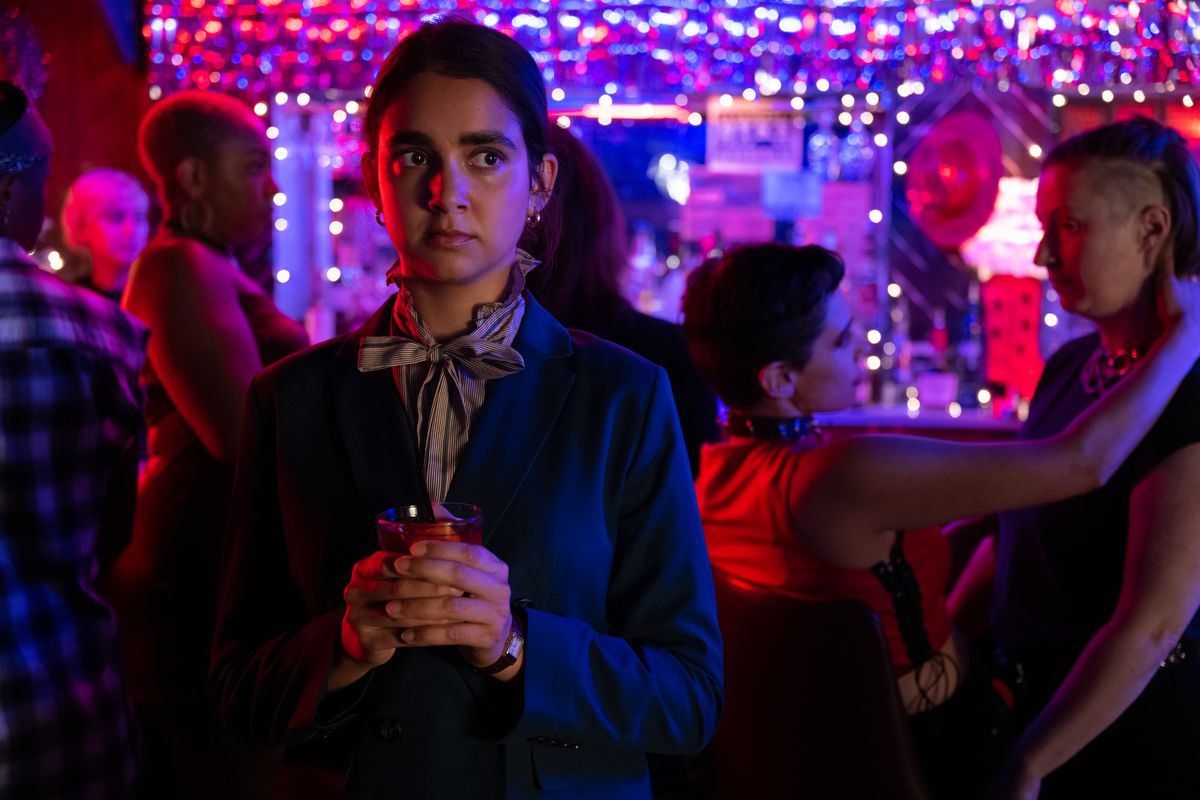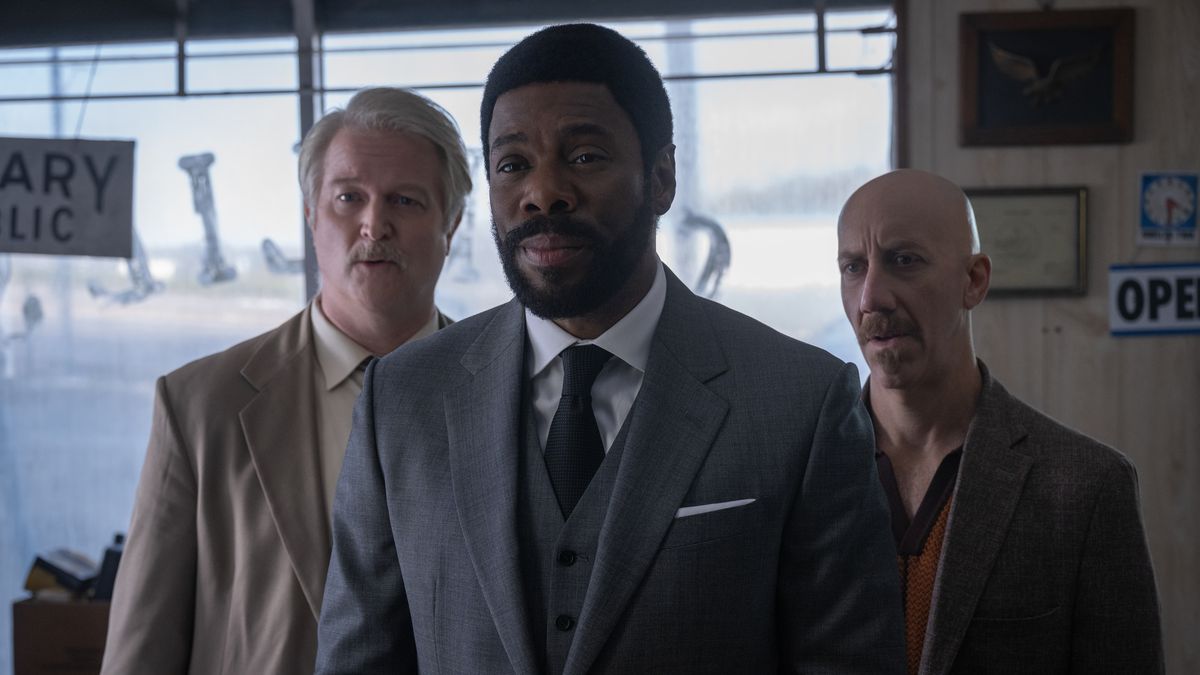Drive-Away Dolls lets Ethan Coen embrace his inner queer punk
The Coen brothers’ filmography is tragically linear. Praised for their stylistic breadth and humor, their films are rich and willing to play with gender roles in a way that welcomes queer readings – the wacky jokes of The Hudsucker Proxy and the winking choreography behind Channing Tatum’s dance numbers Hail Caesar! are among the many playful embellishments where the space between idiosyncrasy and intention is as wide as the viewer wants.
But straight stories for and about them and gays? Not their strong point. But in Grab-away dollsEthan Coen breaks away from his sibling to make his first solo film a grand lesbian romp, trying to cram a few decades of lost time into one outrageous comedy. It’s not quite right, but it’s certainly a party.
Directed by Ethan Coen and co-written by Coen and his wife Tricia Cooke. Grab-away dolls is a long-term passion project of Cooke’s, a love letter to the (now declining) lesbian bar scene from her youth, set at the end of the millennium. The film follows two friends, the unflappably ruthless Jamie (Margaret Qualley) and the uptight Marian (Geraldine Viswanathan), on a road trip from Philadelphia to Tallahassee, Florida, stopping at beautifully named queer haunts along the way. (Think “She Shed” or “The Butter Churn.”) But Jamie and Marian don’t realize they’ve rented a car meant for someone else, and it’s carrying cargo that someone very important wants.
Photo: Wilson Webb/Working title/Focus features
That last part is the well-known line that runs through it Grab-away dolls, the crime caper that those familiar with the Coen brothers’ work would expect. But in this case the caper is hidden somewhere Cooke describes as “trashier” than Ethan’s collaboration with Joel. Another good way to describe it would be “more reckless.” There’s an exciting abandon about it Grab-away dolls that goes against the characteristic control the siblings are known for. The jokes are broad, the sex is lewd, the scene transitions are silly, and psychedelic interstitial images trickle in and out for no reason until the last one reveals a punchline that the audience may have no idea they’re being set up for. for.
All this excess is a ton of fun, and it’s endlessly delightful to see beloved actors like Pedro Pascal, Bill Camp, and Beanie Feldstein bump into Jamie and Marian’s road trip. As a whole though Grab-away dolls feels a bit light. The film does not make enormous use of the historical setting; mostly the year (1999) is the fuel for the plot, with the lack of smartphones being a persistent, plausible reason for the misunderstandings and deceptions behind the film’s antics.
Grab-away dolls could have easily gotten more out of its historical setting, if only to flesh out its two heroes. Qualley and Viswanathan are fantastically cast as Jamie and Marian, but their dynamic is overly familiar: a free-spirited friend wants to help a prudish friend open up and perhaps reconnect with a lady for the first time in three years. And maybe they would be happier together? Just kidding! (Unless…)

Photo: Wilson Webb/Working title/Focus features
Grab-away dolls‘worn beats are backed by great style, great care taken in the film’s production and costume design. All that attention to the era that isn’t fully present in the script comes through in the visuals instead. There isn’t much narrative structure to Marian and Jamie’s various stops – in particular, there isn’t much for Jamie or Marian to connect with. Although the pair have frequent funny interactions during their journey, the people they meet are more or less cartoon characters playing a prank.
Likewise, it’s not particularly clear how Jamie even knows about the bars she wants to stop at. The opportunities for Jamie and Marian to form some kind of connection with the people in the places they go, to make the film live in the reality of how queer people found community in the pre-social networking era, are few and far between. This missing texture turns the film into a sweet cocktail with Pop Rocks on the rim, an overwhelming flavor with arguably unnecessary crackle that’s hard to get mad at. Search for something deeper, and you start to sense Chief (Colman Domingo), the fixer for the film’s villain (played by someone more fun to discover for yourself), chasing after the briefcase Jamie and Marian are unknowingly carrying landed. .

Photo: Wilson Webb/Working title/Focus features
Yet this lack of content continues to rankle Grab-away dollsbecause the movie do intersect with the political reality of its time, with its opponents rooted in the ‘family values’ politics of the turn of the century and how the strange existence is labeled as vulgar. On repeat viewings, it’s possible that this quibble reveals itself as a void, as the thinness of the characters only serves to facilitate jokes, and the jokes don’t build much on the characters or the world they inhabit.
However, Coen and Cooke don’t seem to be bothered by this as much, because they have made a film in which being outrageous, gay and excessively gay is statement enough. This is probably the filmmakers’ most convincing argument Grab-away dollsa lyric created as the credits begin to explode on screen, preceded by the film’s original, less polite title: Drive-away dikes.
Grab-away dolls is in theaters now.
